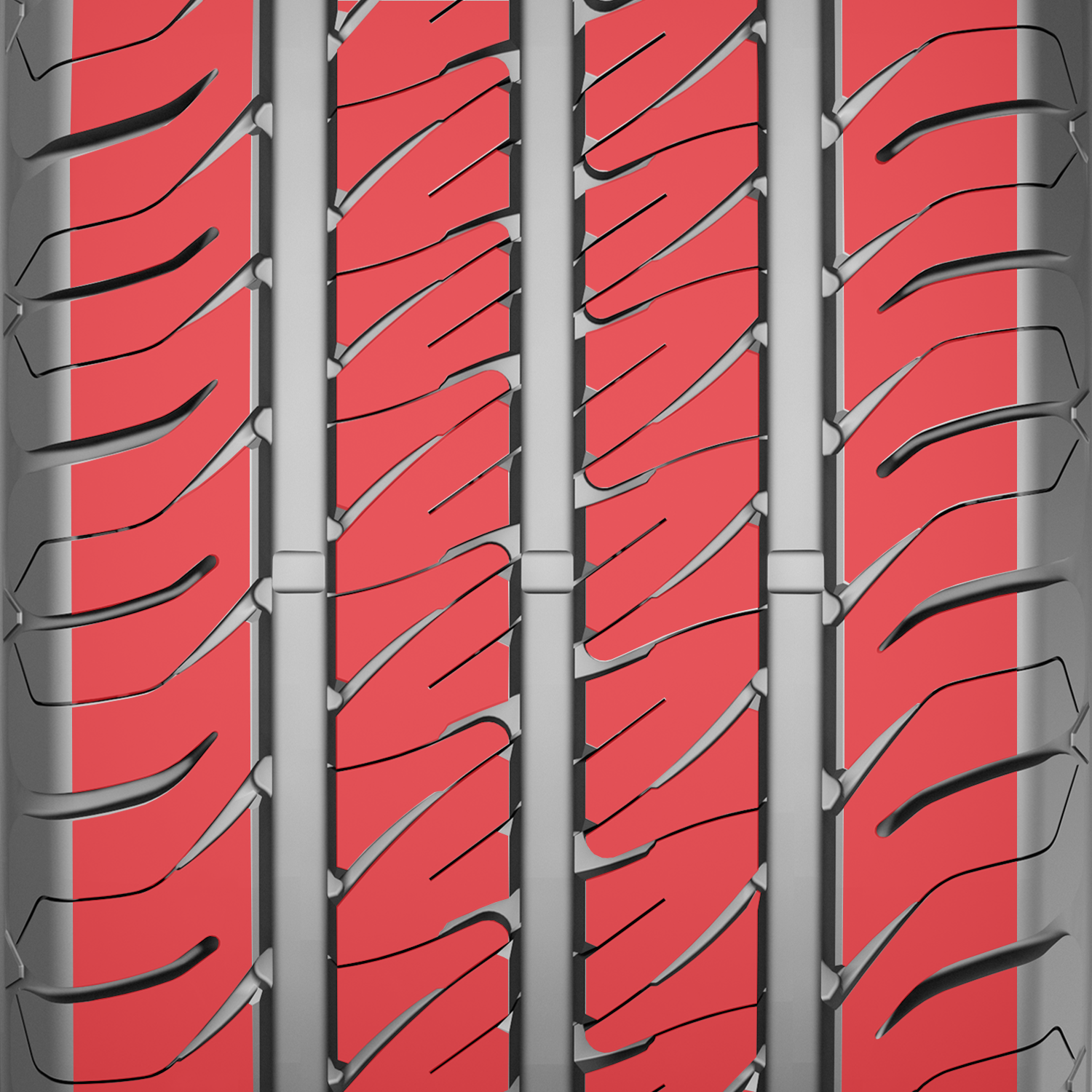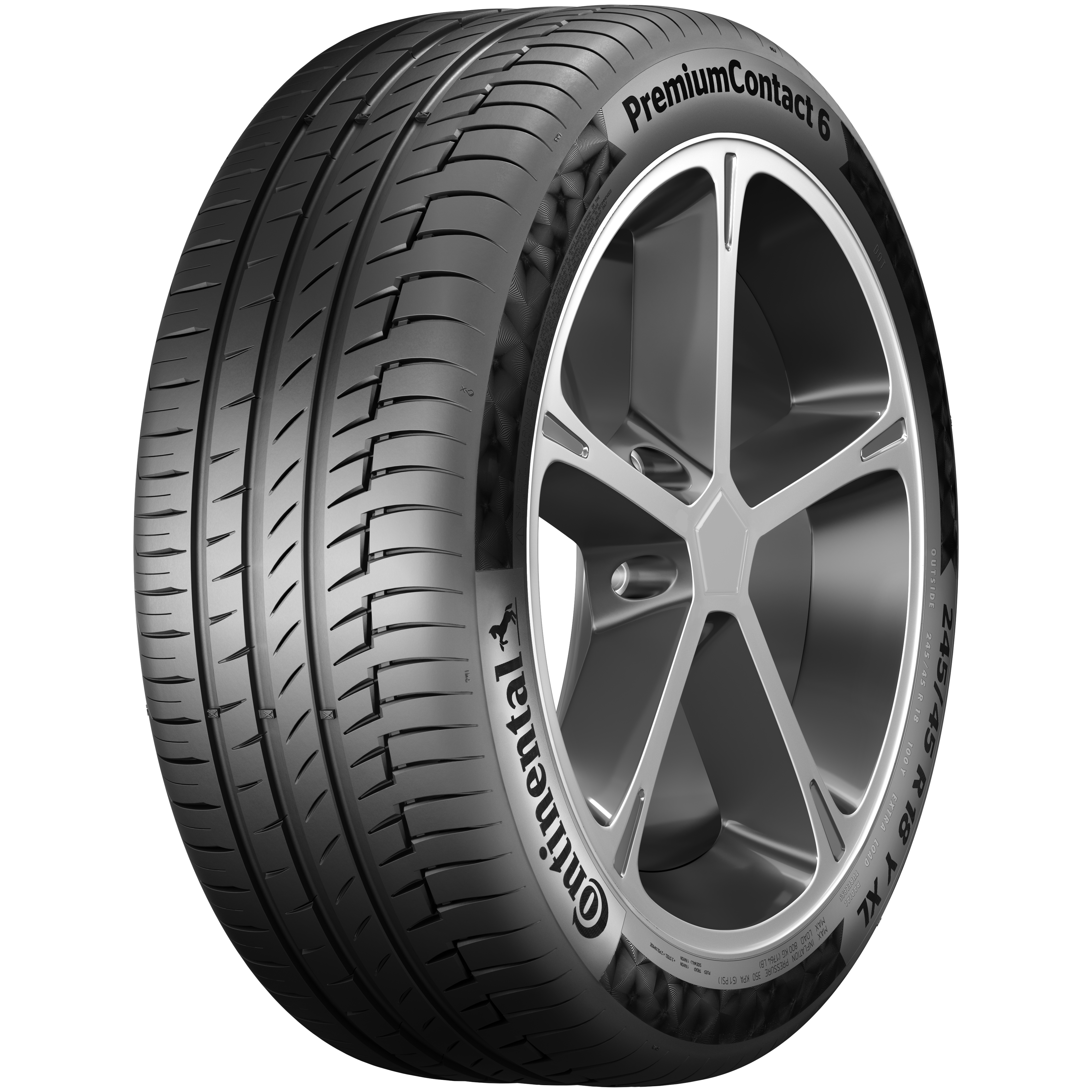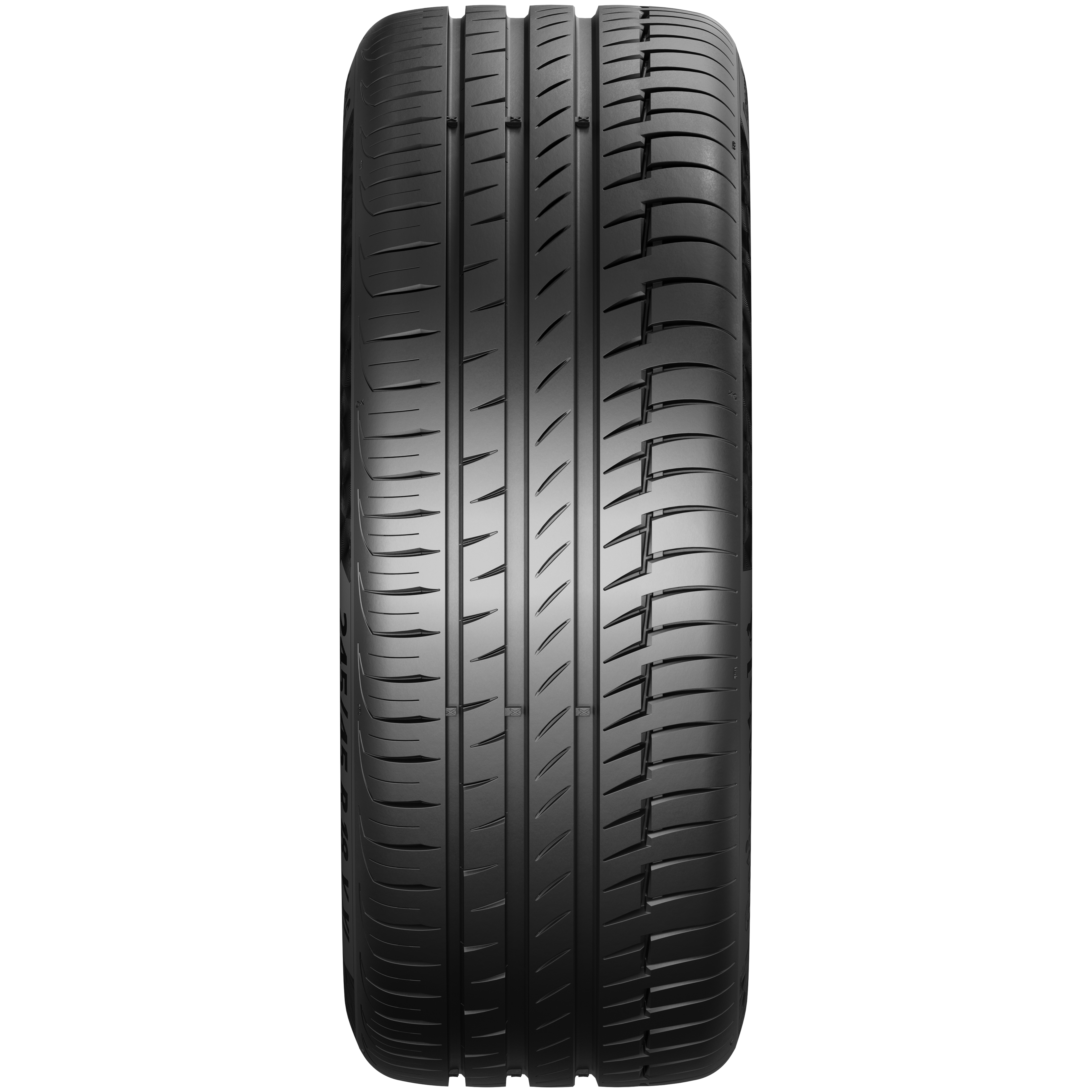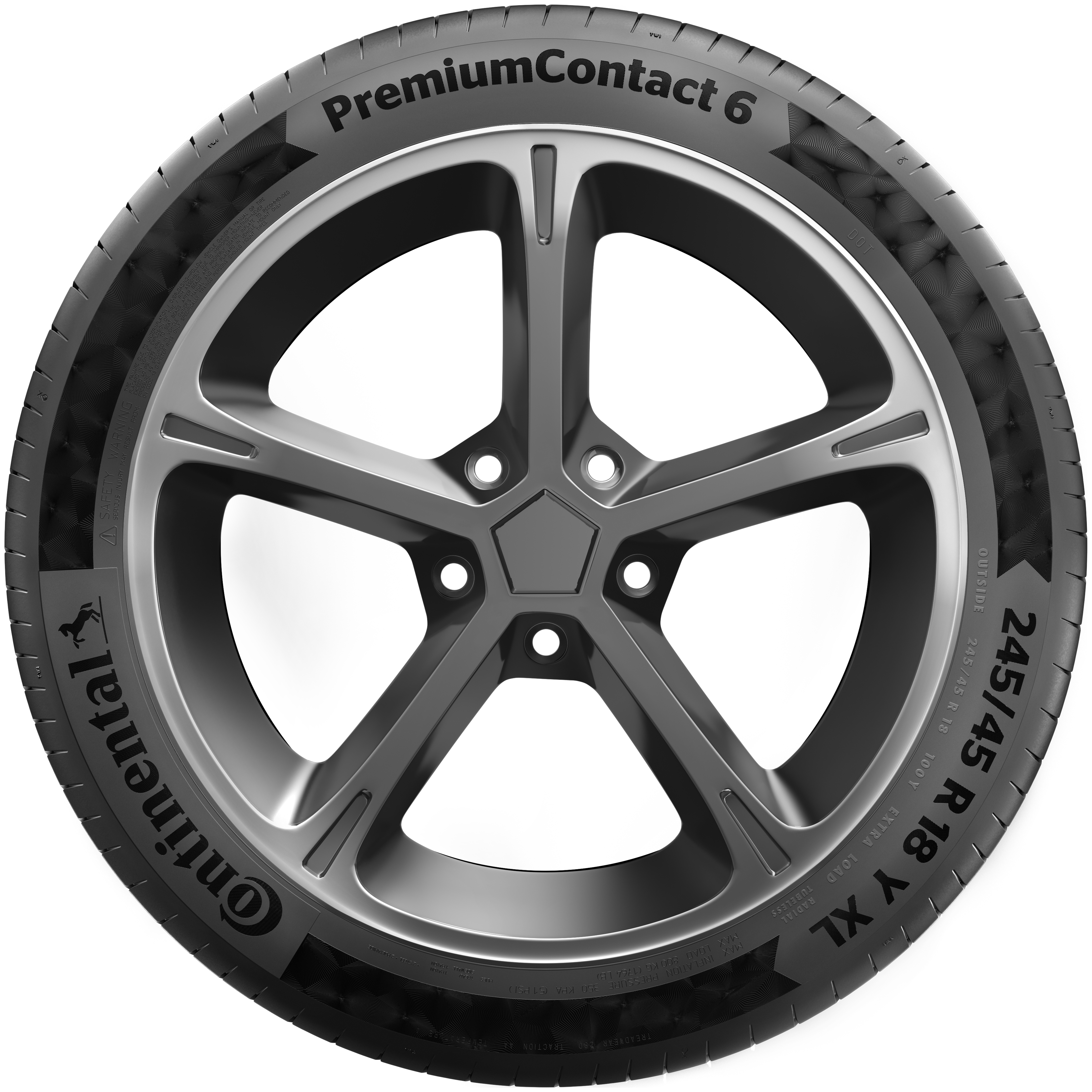(name of the tire)
(tire description)
Highlights
- Aquaplaning
- Handling
- Fuel efficiency
Aquaplaning
When you are carrying precious cargo – whether its parcels or people – you need tyres you can rely on.
The innovative tread design enables reduced braking distance on wet roads. This increases driving safety in wet conditions.
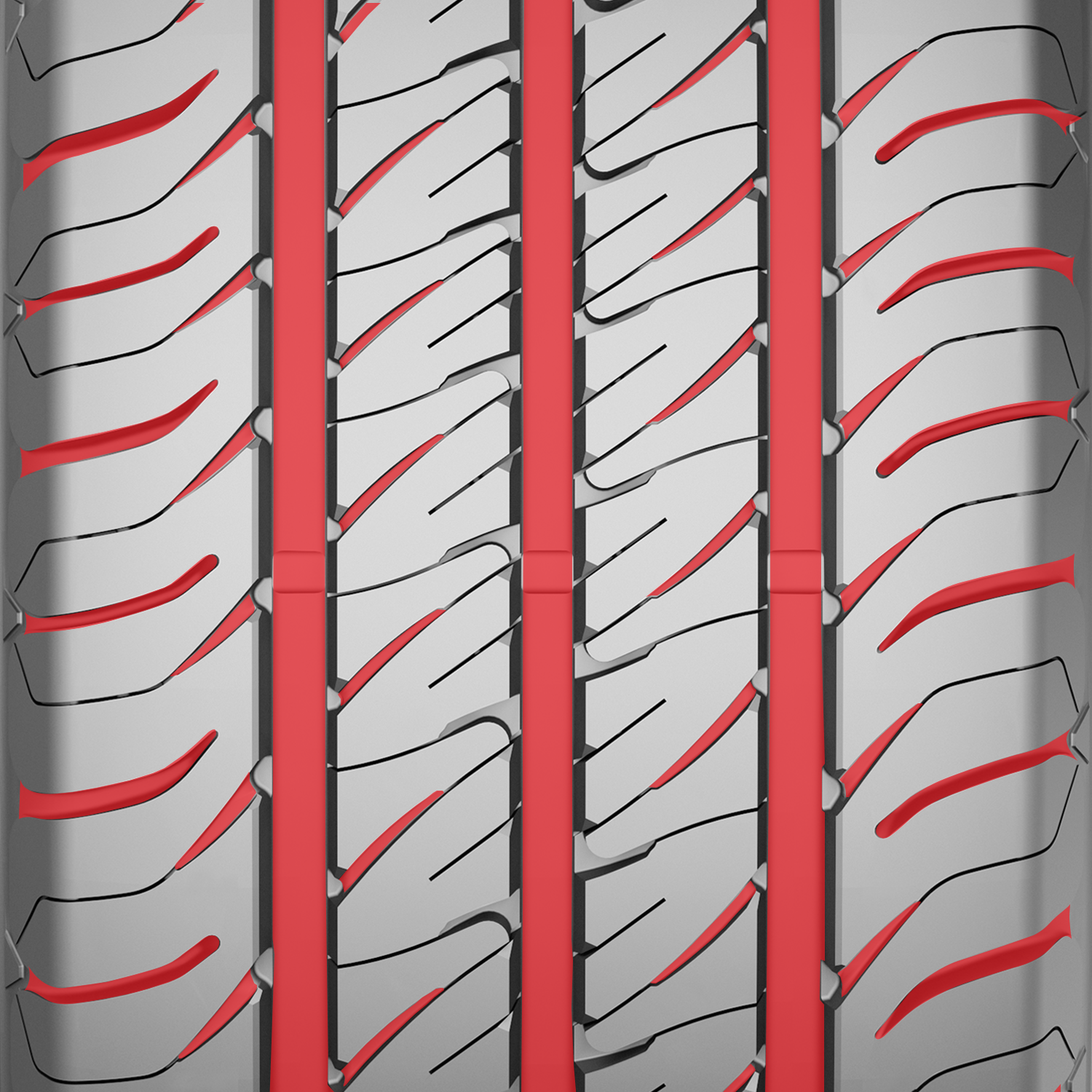
Handling
Outstanding handling and braking performance on dry roads. The tyre offers impressive stability, which optimises vehicle handling and braking performance on dry roads.
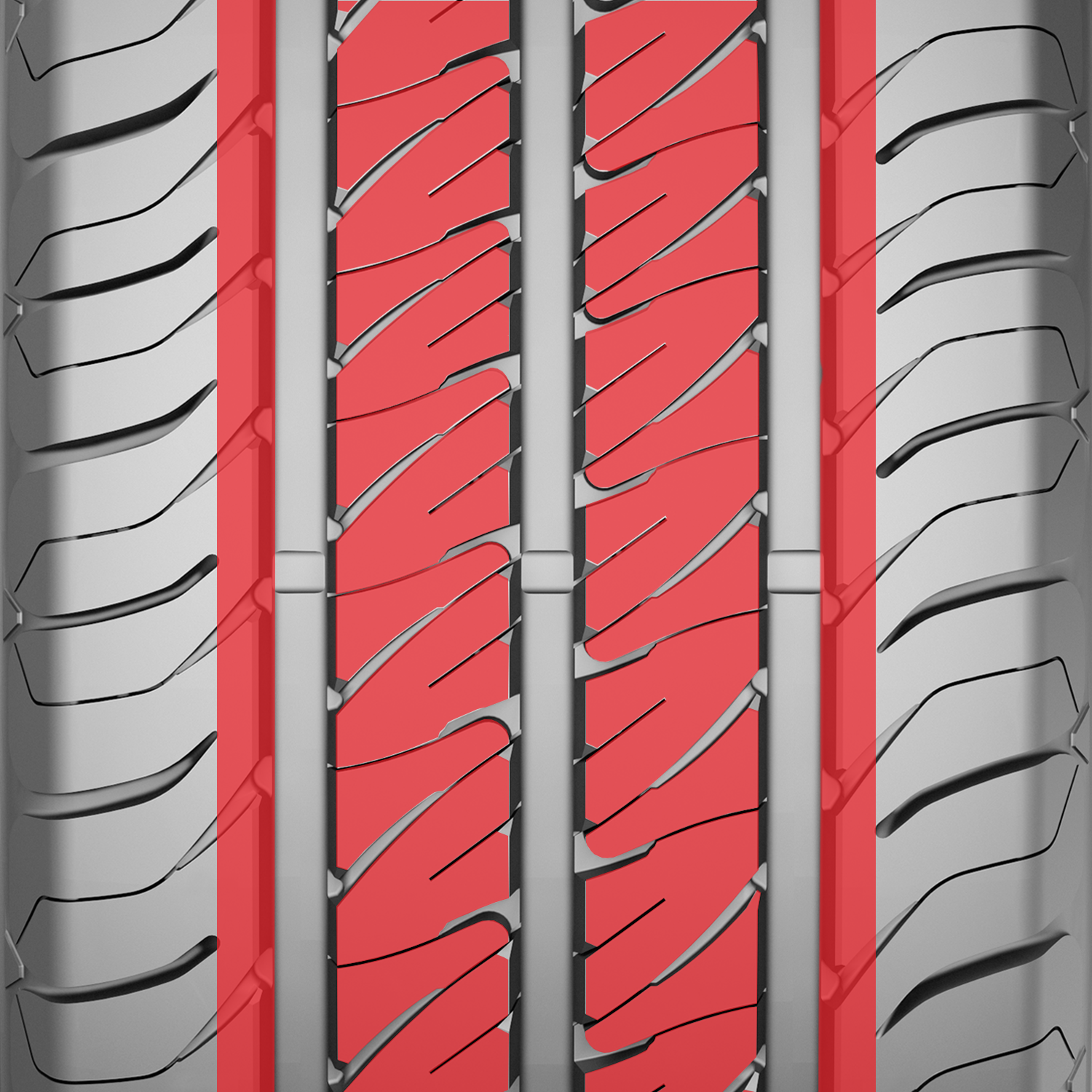
Improved fuel efficiency
The improved tyre tread geometry leads to reduced wear. This increases mileage and reduces fuel consumption.
